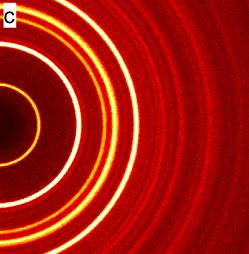- cross-posted to:
- technology@lemmy.world
- technology@lemmy.world
- cross-posted to:
- technology@lemmy.world
- technology@lemmy.world
Huge if this is true. Claim is: They have attained superconductivity at room temperature and ambient pressure. Also superconductivity holds till 127 C.
Just by looking at the authors, this is not real:
Of the three, the first author (and corresponding author) and second author claim Q-centre as affiliation. If you check the webpage, it is not a research lab but just a commercial company selling this as a product. The third author claims KU-KIST as affiliation, but the only one I can find in google scholar has no background on superconductivity at all, and actually I can’t even find them as a current faculty member of KU-KIST.
If you look at the other paper they have in arxiv about the same, list of authors from the same Q-Centre, plus a last author from Hanyang university, but researchgate shows him as last publishing in 2006, so I assume long time retired by now. Not in the field of superconductors either.
I am looking for other work from any of the authors, and I can find none. Science is an incremental process, with some breakthroughs, sure, but incremental. Cancer won’t be cured in a day, and room temperature ambient pressure superconductors won’t just happen out of nowhere. Even room temperature superconductors at very high pressures aren’t really a thing, as the recent retractions of Ranga Dias’ papers shows.
As an aside, here is an interesting talk about the work that went into showing that the data was manipulated in those high-pressure room-temperature superconductor papers - as much as papers with manipulated data are a terrible thing for science, the fact that people will go to these lengths to prove them wrong is very reassuring. A paper that is wrong only misleads for a while, actual science pushes through and buries it eventually.
There is no room for a mistake or massaging data here. The authors have photos and video of magnetic levitation. It is either outright fraud, or true. You are claiming without evidence that these people intentionally faked the paper and it is entirely made up (which could well be true, but is a much stronger claim than shoddy statistical analysis, and much easier to prove).
As to prior work. All three authors have previous publications on perovskites. If the trick for room temperature superconductivity turns out to be putting a low temperature superconducting material in a crystal lattice where it doesn’t have enough room (which is a concept consistent with existing literature), then it seems reasonable that a perovskite researcher would discover it first as there is not really any special knowledge of superconductivity beyond the basics required (ie. The what is exceedingly simple if it turns out it works, the how is hard and is not the domain of a superconductivity expert).
Extraordinary claims and all that, but none of your criticisms are valid.
Can you link me to their prior work? I could not find it. I did check Q-centre and it is a commercial page selling this material as a product. This is a scam, not the biggest breakthrough of the century (until/unless we get working fusion power plants).
Just click through the links on the names. A decent number of them were actually published in reputable journals (the ones with doi links). On second glance there’s a decent amount of superconductor stuff there too.
If it is fraud, it’s very deliberate fraud (the website is sketchy as hell so could easily be).
https://sciencecast.org/casts/suc384jly50n
There is no way that is diamagnetic or ferromagnetic levitation unless the “magnet” under it is actually several magnets in different orientations or there are other magnets deliberately hidden out of frame. The sketchy website and lack of any public facing claims actually bodes well in my book. Fraudsters generally don’t limit the video to an obscure link.
Given how simple the reproduction is, we should see a reproduction or some debunking within a few weeks.
Just by clicking on Arxiv I see lists of people with similar names, but if you look specifically for them they are only on this paper and the sibling paper with the levitation: Sukbae, Kim and Young-Wan. Kim is also on the other paper without the dash in his name.
Searching in scholar, researchgate, web of science, I cannot find anything.
I have checked out the levitation video, but I see no levitation there, just a magnetized thing with low mass. The typical Meissner effect levitation is done by cooling from above Tc, while keeping your superconductor separated from the magnet a small distance. The flux lines get pinned once you cool down below Tc and you can remove your spacer leaving your SC levitating. This is not that.
In any case, I fully agree with your last sentence: The fabrication procedure is simple enough that anyone that wants to replicate it, can do so. I really would love to be proven wrong, ambient SC would be an absolute civilization changer, but I don’t think this is anything of the sort.
This is published on ArXiv, meaning it’s not peer-reviewed yet. It is an exciting conclusion, but remember that there is a very real chance that there are errors in the manuscript. The conclusion might end up not being true due to those errors. Try to take this paper with a huge grain of salt.
Peer review is great and all, but they have video. This is either real or outright fraud. I’m don’t know what they’d gain from fraud here, as this is such big news it will be replicated quickly.
👏 👏 👏
Biggest discovery of the century so far if true.Very little chance of being real
And yet no other peer reviewed science journals are reporting this. Suspicious at best.
That’s… not how science journals work.
(X) Doubt
Im so ready for this. Going to change the world. Who is smart enough to tell me why this isn’t really a room temperature super conductor?
This is published an ArXiv. That means it’s a manuscript that hasn’t passed peer review yet. There is a very real chance that the reviewers will find errors in the manuscript that change the interpretation of the data. In other words, I would take anything on ArXiv with a huge grain of salt
The authors say they have a video of it levitating. This is way beyond error territory. This is either a deliberate hoax or a real discovery. The authors realize the significance of what they have. When you commit academic fraud, you go for something boring, or at least something difficult verify, like Hwang Woo-suk or Elizabeth Holmes, not simple and easily reproducible and altering the course of history.
Being published in a journal isn’t what makes something true. That’s just the scientific concensus process, but true facts have been true for all time. I can totally imagine someone who has made a discovery of this magnitude simply dumping it on arxiv for everyone to see. If it’s true, we’ll see levitation videos all over the world tomorrow. Even if you try to keep it secret or patent it, it’s impossible for something this simple yet important. More noble to release it for the benefit of mankind. If it’s a hoax, we’ll know - not next year but next week - and their careers will be ruined.
It’s been hoaxed by like 4 different groups or more at this point
There was a recent ‘discovery’ that seems to have gone very quiet already this year, iirc the results couldn’t be reproduced. So I guess we have to wait and see if another team can reproduce these results. A line I found interesting was:
“The superconductivity of LK-99 originates from minute structural distortion by a slight volume shrinkage (0.48 %), not by external factors such as temperature and pressure”
‘A slight volume shrinkage’ kinda sounds like the results of pressure to me? I’m not equipped to fully understand all the terms they use, but it sounds like they’ve found a way to apply pressure internally in the material, without using pressure in the environment.
They replaced some of the lead(II) ions with copper(II), which has a smaller ionic radius. That’s why the structure would be smaller. Then they meander around other superconductor discoveries to make the argument that this volume change is the cause of the superconducting property here.
As a chemist I can’t say much about the physics aspects of this paper, but the chemistry and crystallography seem reasonable. It would only take a few days to replicate the synthesis and run some of these tests on it, assuming this is real. If I ran a lab doing these things I would be doing that right now.
deleted by creator
Something I’d like to point out is that this material is inherently hard to bring to high purity. It relies on a copper atom jumping into a higher energy configuration by chance which is not going to happen often since everything always tends towards the lowest energy configuration possible. Even if you wanted to make a low purity sample and refine it, the supposed material properties depend on the crystal structure, so you can’t melt it down, you can’t crush it and bring the powder back to a solid, it eludes most conventional ways of purifying a material.
If it’s real, we’re not going to see any mass production for a long time. It’ll be harder to mass produce than graphene by quite a bit, and we see how long that’s taking.
Just imagine how a superconducting material would change electrical infrastructure. We’d be able to simplify so many aspects of electrical work to the point it feels like magic.
For anyone curious, I asked ChatGPT What would be the implications if true, and here was it’s reply:
As of my last knowledge update in September 2021, there had been no verified room-temperature ambient-pressure superconductors. However, if such a claim were to be validated and a room-temperature superconductor were indeed discovered, it would have profound implications across various fields:
- Energy Efficiency: Room-temperature superconductors would revolutionize power generation, transmission, and storage. Power grids and electrical devices that utilize superconductors could operate without energy losses due to resistance, resulting in significantly improved energy efficiency.
- Transportation: Room-temperature superconductors could be used in magnetic levitation (Maglev) trains, making them more practical and cost-effective to implement. Maglev trains already have lower friction and energy consumption than traditional trains, and with superconductors, their performance could be further enhanced.
- Medical Applications: Magnetic resonance imaging (MRI) machines that use superconducting magnets would become more accessible and cheaper to operate. This could lead to increased availability of high-quality medical imaging and improved healthcare diagnostics.
- Electronics: Room-temperature superconductors could enable the development of extremely fast and energy-efficient electronic devices, leading to advancements in computing and communication technologies.
- Scientific Research: Superconductors are essential for high-energy physics research, so a room-temperature superconductor would potentially revolutionize particle accelerators, allowing for more accessible and cost-effective facilities for scientific exploration.
- Renewable Energy: The efficiency of renewable energy sources like wind and solar power could be greatly improved by using superconductors in their power generation and storage systems.
- Transportation Electrification: Electric vehicles (EVs) could benefit from room-temperature superconductors, allowing for faster charging and longer-range capabilities.
- Industrial Applications: Superconductors could enhance the efficiency of motors, generators, and other industrial equipment, leading to reduced energy consumption and lower greenhouse gas emissions.
- Aerospace: Aerospace technologies could benefit from lightweight, energy-efficient superconducting components, making space exploration and aviation more economical and sustainable.
- Scientific Understanding: The discovery of room-temperature superconductors could potentially lead to new insights into the fundamental principles of condensed matter physics, offering a deeper understanding of quantum mechanics and material properties.
It’s important to note that claims of room-temperature superconductors need to be carefully scrutinized and independently verified by the scientific community. If such a discovery were confirmed, it would be a groundbreaking achievement with far-reaching implications for various industries and scientific research.
Can confirm 1,2,3,5,6,8, and 10.
deleted by creator
Yes, lead. Why, were you gonna eat that?
Still might




